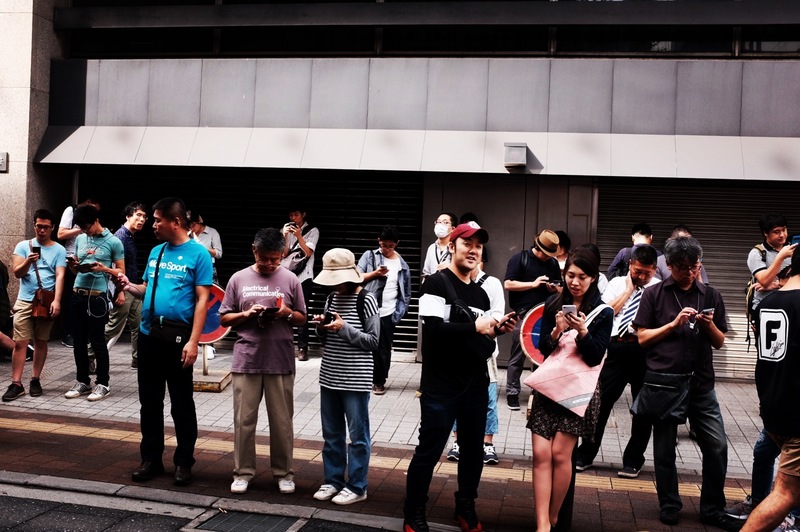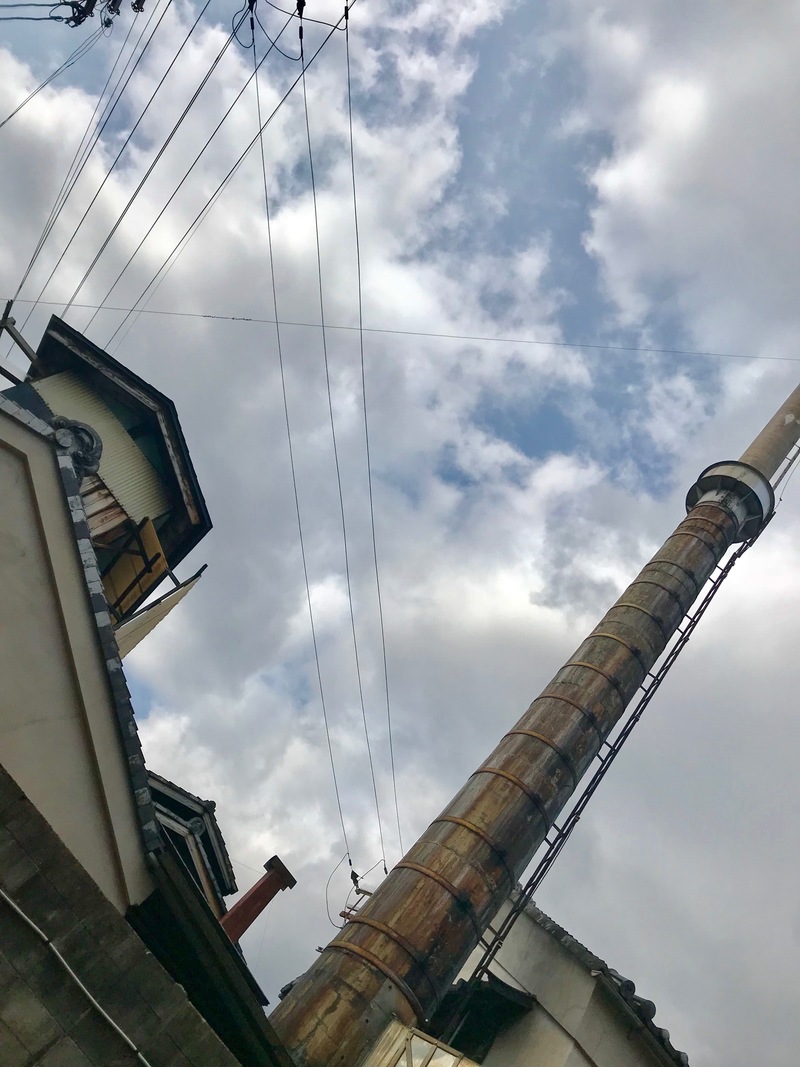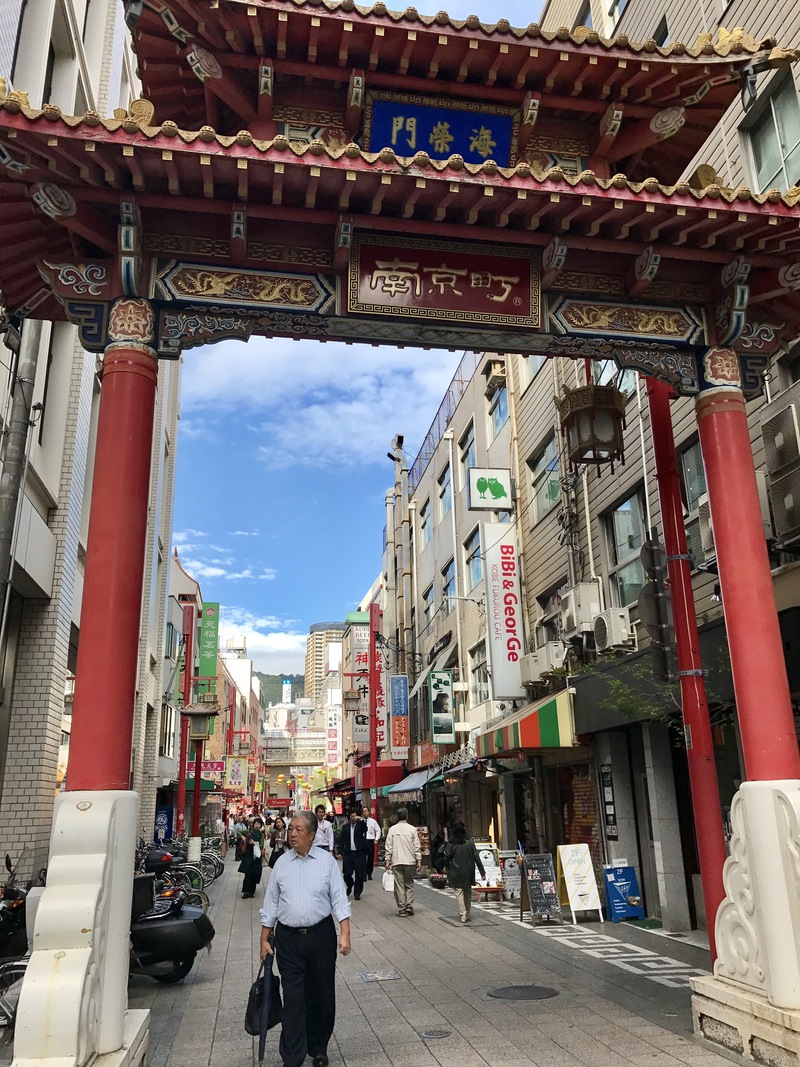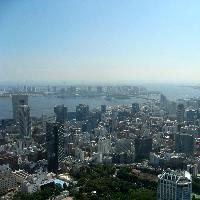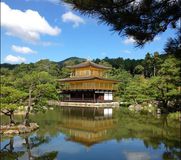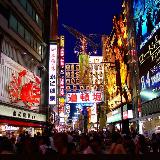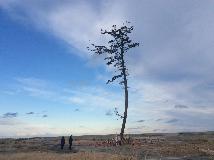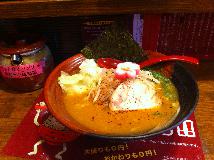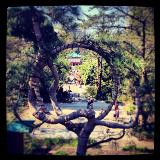The following sounds were recorded during an evening protest in front of the Government offices in Kasumigaseki and Nagatacho in central Tokyo.I began my sensory experience at the Anti Nuke Occupy Tent, which was located near exit A12 of the Kasumigaseki Station. There, in front of the Ministry of Economy, Trade and Industry (keizai sangyō-shō: 経済産業省 or METI), activists have constructed a sort of headquarters for a variety of groups to organize and plan their activities, as well as a place to rest and socialize.
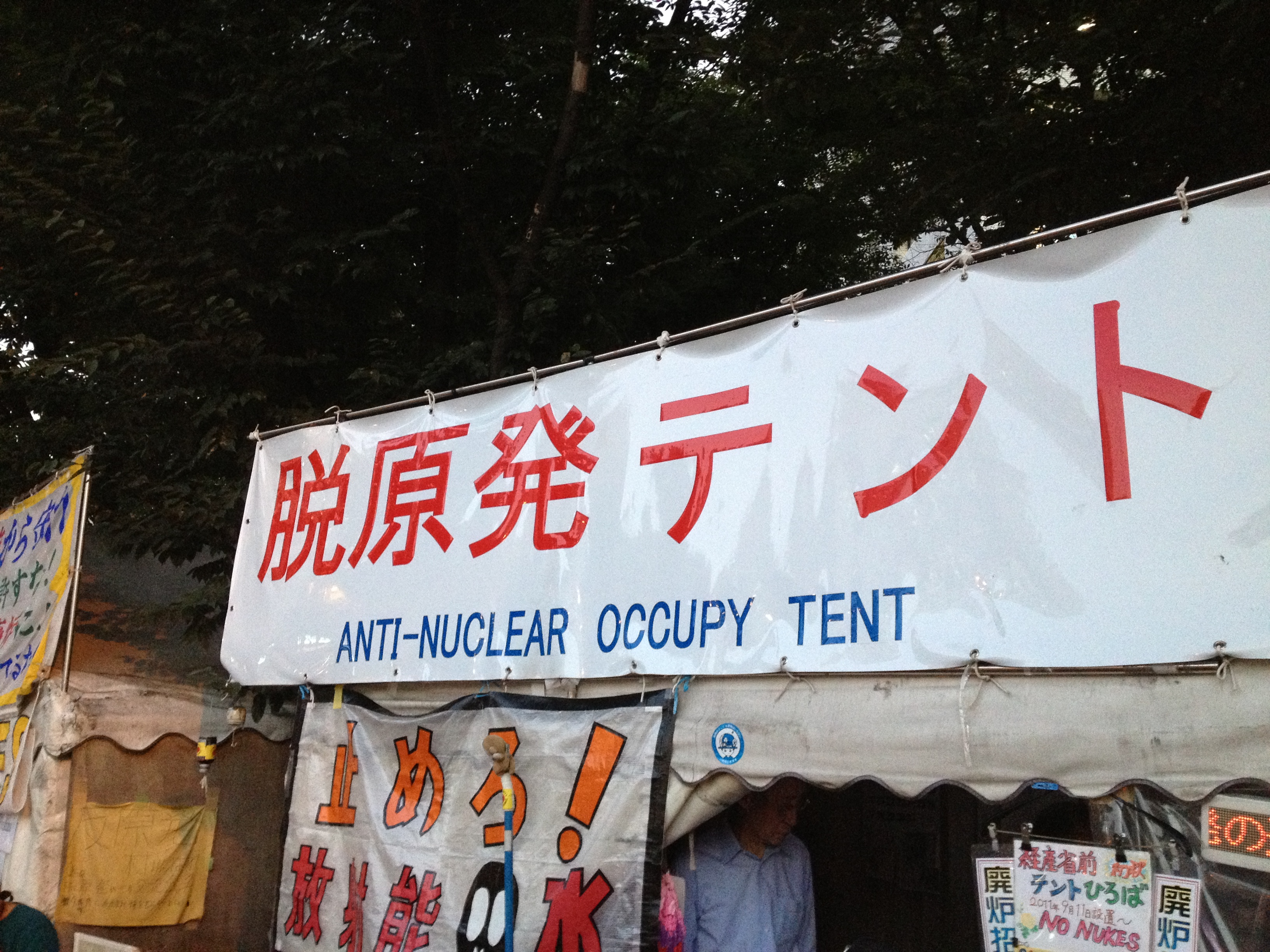
The activist headquarters in front of METI. Its banner borrows from US based activist discourse.
Several groups were installed in this area, and here they settled the corner with their tents and tables offering flyers, booklets and 'hanpatsu (anti-nuclear) goods' such as badges. The atmosphere at the tent is relaxed and friendly, though at first I am asked to declare my intentions upon my visit. When I say I am a university professor interested in the demonstration and give them the names of my contacts in Japan and in Australia who are active in the cause, I am warmly welcomed.
Some time after 6 pm (we are running late) the crew from the tent organise themselves to walk down the street and around the corner to the Prime Minister's Residence (Shushō Kantei: 首相官邸), where various groups stage a protest every Friday evening. The time and place is chosen because this is the time of day when many government workers are leaving their offices and walking past the Residence for the Nagatacho and Kasumigaseki subway stations. Also, being Friday evening, the protesters consider the timing especially vulnerable; they wish to disrupt the status quo of any pleasurable end of the week evening drinks or meals that might be taking place within the Prime Minister's offices.
The sun has now set, and people are lining the street against the fence that separates the government buildings from the footpath. In this recording, you hear the activists walking from the tent to the Prime Minister's residence. Most walk in silence, but occasionally greet friends and colleagues they pass on their way to take their places. About halfway between the Nagatacho Station exit and the Prime Minister's residence, some Buddhist Monks have taken their place, beating drums and chanting sutras in their quest for non-nuclear peace.
At the corner of the residence, the police are waiting. Their presence is visible, but not oppressive, as they are accustomed to these gatherings, which have been taking place since 2011.

Police line the boundary between the street and the sidewalk in order to allow office workers unhindered passage to the subway stations through the protest.
After all have gathered, there are various greetings from activists. The first is a visitor from Osaka; his greeting is punctuated with cheers and claps, as well as percussive instruments such as maracas and bells. After these preliminaries, a woman from a group based in Tokyo starts the chant which includes variations around the phrase: genpatsu hantai (Against Nukes!). The chant follows a call-response pattern, where the leader chants anti-nuclear phrases and the demonstrators echo her words. You can hear drums, maracas, and horns being played by participants throughout the recording. The rhythm is twice interrupted by the leader inserting too many syllables, or adding new ideas. The leader is chanting a variety of phrases with the tag 'usotsuki Shinzo' (referring to the current Prime Minister, Shinzo Abe, as 'that liar Shinzo'), and at 2:38, when the protestors lose the rhythm, the protestors hesitate, and laugh, and someone shouts 'Whatever, Shinzo!' (nan da ka Shinzo!: なんだか晋三!) during their response timing but, as you can hear, overall the energy in the call and response pattern is positive and supportive.
Click to Play Sound: Anti Nuke protest chant edit
Another speaker criticizes the recent award of the 2020 Olympic Games to Tokyo when there is still so much work to be done in Tohoku (the region devastated by the earthquake and tsunami on 3/11/2011). There are then several speakers from Fukushima, the site of the Fukushima No. 1 Nuclear Reactor, both men and women. They speak movingly about their personal experiences during the disaster and the ensuing evacuation. Many of the speakers discuss the need to protect children and other vulnerable members of society from radiation. The microphone is then passed to another woman, introduced as from Tochigi Prefecture (located adjacent to Fukushima Prefecture). During the woman's speech, a fire engine's siren could be heard in this distance; as it came closer, her mic'ed voice was drowned out, so she stops speaking, briefly, and the resumes to say that the sound of the siren is very evocative for her because 'it brings me back to that day on 11 March', and the crowd reacts in solidarity with her whilst the wind blows through the crowd. This siren, a universal symbol of disaster, fear and hope, gives rise to emotive remembrance and is the evening's most emotional moment. The crowd, which had been listening but also murmuring amongst itself, becomes silent in the last part of her speech.
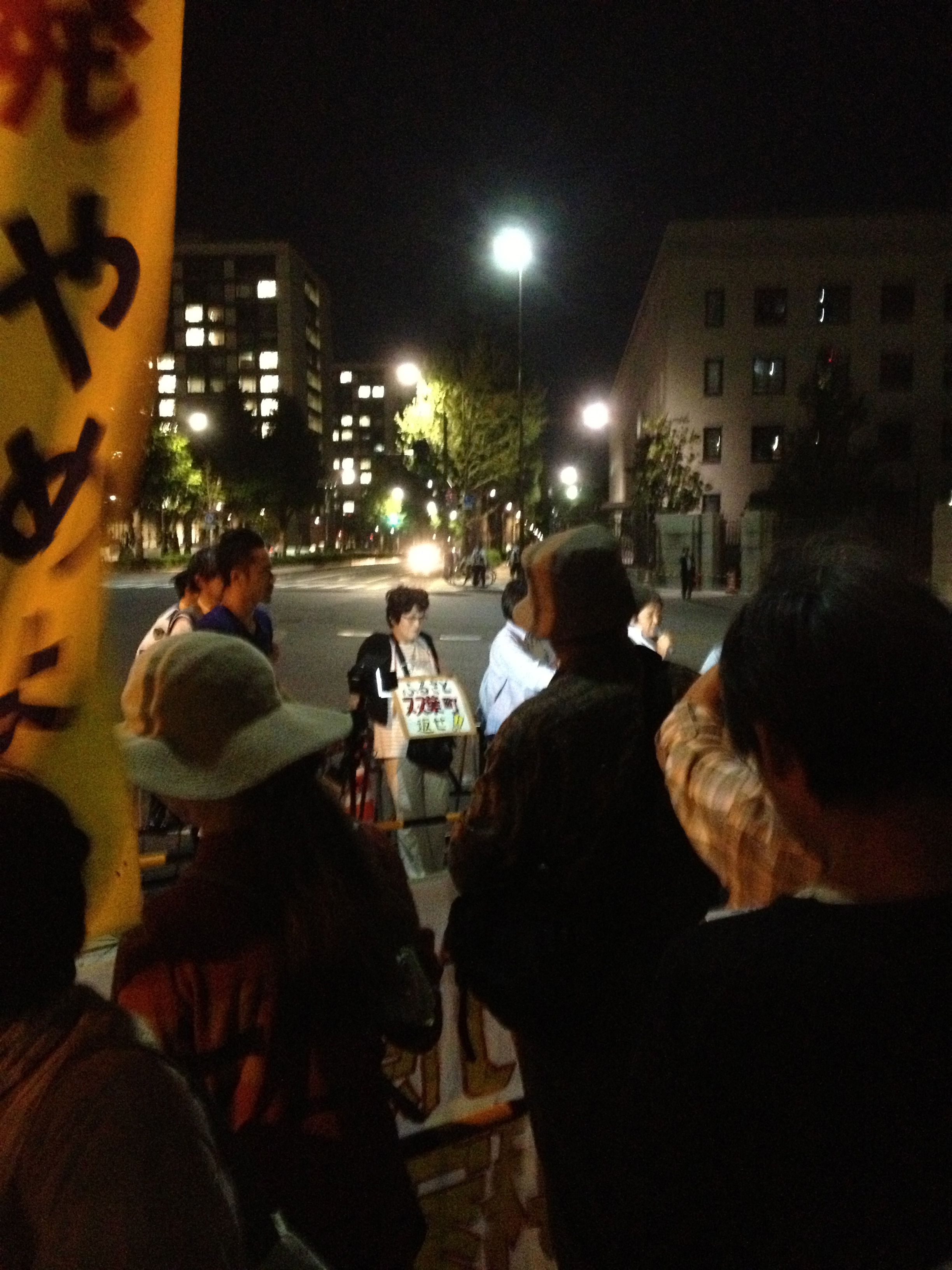
A speaker from Fukushima
Click to Play Sound: Anti Nuke protest speech edit
During the protest, the police kept a passageway open for commuters to use, but there was little if any interaction between them and the police. In fact, the only interaction I saw with any civilians was telling the Japanese interpreter for a German television crew to stand behind the lines. The protest was orderly and respectful of personal space. The sounds of the monks' drums, the maracas and the 'Genpatsu Hantai' chant, however, stayed in my ears for hours afterwards.
Photographs and recordings by Carolyn Stevens.
